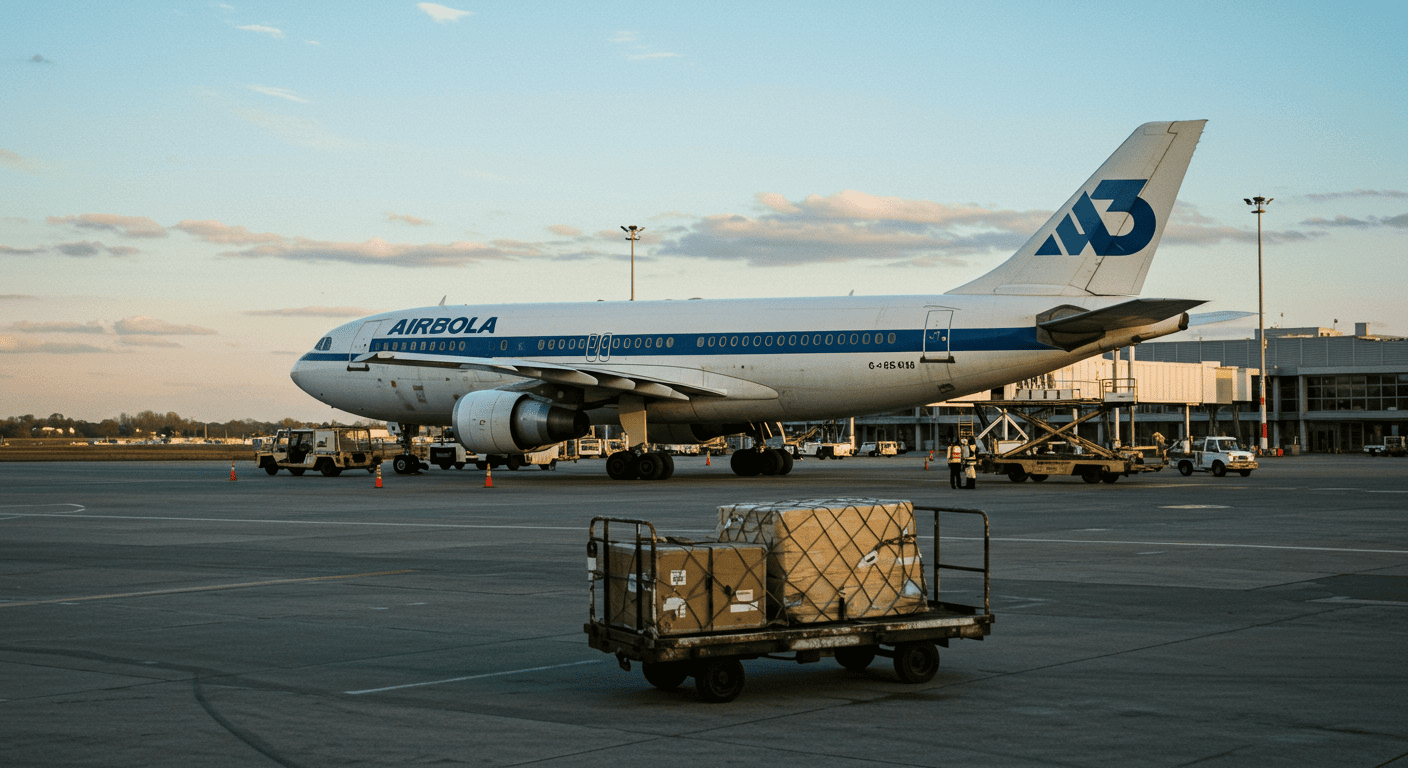The Airbus A300 changed commercial aviation with its innovative design: a wide-body, twin-aisle aircraft powered by just two engines. This configuration established Airbus as a major competitor to American manufacturers and set a new standard for fuel efficiency that would influence aircraft design for decades.
Introduction to the Airbus A300
The Airbus A300 is a landmark in aviation history, marking Airbus’s successful entry into the commercial aircraft market. As the manufacturer’s first production aircraft, it pioneered an entirely new category of airliner: the world’s first twin-engine, double-aisle aircraft. This revolutionary concept combined the spaciousness of a wide-body jet with the unprecedented economic efficiency of just two engines.
Developed by the European consortium Airbus Industries GIE—the forerunner to modern Airbus SE—the program was officially launched in 1972. Development progressed at a remarkable pace, and its maiden flight took place on October 28, 1972. Following successful testing, the Airbus A300 entered commercial service with launch customer Air France on May 30, 1974. This milestone established a new standard for medium-haul travel and paved the way for decades of innovation. Its production run of over 35 years, from 1971 until 2007, demonstrates its enduring design and versatility.
Key Specifications of the Airbus A300
The A300’s specifications established a new benchmark for medium-haul airliners:
- Dimensions: Fuselage diameter of 5.64 m (18 ft 6 in), length from 53.61 m (175 ft 11 in) to 54.08 m (177 ft 5 in), and a wingspan of 44.84 m (147 ft 1 in).
- Cabin: A spacious twin-aisle layout, typically configured with eight-abreast seating.
- Capacity: Accommodates around 266 passengers in a two-class layout (over 300 in high-density configurations) and up to 22 standard LD3 cargo containers.
- Performance (A300-600R): Maximum range of 7,500 km (4,050 NMI), a cruise speed of Mach 0.78 (833 km/h or 518 mph), and a service ceiling of 40,000 ft (12,200 m).
The A300 was powered by advanced high-bypass turbofan engines, with options evolving over its production life:
- Initial Models: Offered a choice of the General Electric CF6-50 or the Pratt & Whitney JT9D.
- Later Variants (e.g., A300-600): Equipped with more powerful and efficient power plants, including the General Electric CF6-80C2 and the Pratt & Whitney PW4000 series.
Variants of the Airbus A300
The Airbus A300 was never a single, static design; it was the foundation for a versatile family of aircraft. Throughout its long production run, the platform evolved to meet evolving airline demands for greater range, capacity, and efficiency. This continuous development led to several distinct variants, each building on the success of its predecessor with key improvements.
Airbus A300 in Service
Following its commercial debut, the A300’s adoption was initially slow. Soon enough, however, its remarkable efficiency and innovative design won over airlines worldwide, establishing it as a reliable workhorse for medium-haul passenger transport.
Decades after its debut, the A300 found a remarkable second life. While most passenger versions have long been retired, the aircraft remains a major player in the global air freight industry. Its robust design and voluminous fuselage made it a prime candidate for cargo conversion, and by 2020, over 200 were still in service—primarily as dedicated freighters for major operators like FedEx Express and Mahan Air.
The A300’s enduring popularity in freight operations stems from its effective combination of range and payload capacity, which enables the efficient transport of heavy shipments. This blend of reliability and performance ensures it remains an indispensable asset, proving the longevity of its groundbreaking design.
Safety Record and Incidents
Over its extensive service life, the Airbus A300 has been involved in several major accidents. Across nearly five decades of global operations, the aircraft has experienced 24 to 26 hull-loss incidents, resulting in over 1,100 fatalities.
Investigation into these events often pointed to external factors rather than flaws in the aircraft’s design. Many notable accidents were attributed to pilot error, air traffic control mistakes, or even misidentification. Two of the most tragic examples include the 1994 crash of China Airlines Flight 140 and the 1997 Garuda Indonesia Flight 152 disaster. These incidents became crucial case studies, leading to industry-wide improvements in crew training and operational procedures.
Following these events, the A300’s safety record saw progressive improvement. Enhanced pilot training protocols and key technological upgrades were key to creating safer operations during its later years. This evolution helped solidify the aircraft’s reputation for structural robustness, allowing it to remain a valued and reliable asset, particularly in demanding air cargo operations.
Technological Innovations of the A300
The Airbus A300 was a technological pioneer that introduced major changes to commercial aviation. Its core innovation was the twin-engine, wide-body concept, which broke from the triplet and quad-jet convention for large aircraft. This design offered unprecedented operational efficiency and set a new standard for medium-haul routes.
Inside the cockpit, the A300 introduced features that would become industry norms. It was among the first airliners to incorporate a glass cockpit, replacing traditional mechanical dials with electronic flight instrument displays. This advanced interface simplified flight management and reduced pilot workload by providing clearer, more comprehensive data.
These advanced design choices did not end with the A300. The aircraft’s advanced metal construction and innovative systems provided the foundation for future Airbus models. The subsequent A310 and A330 were direct beneficiaries of the A300’s technological legacy, inheriting and refining its core principles of efficiency, advanced avionics, and operational safety. The A300 thus established a design philosophy that guided an entire generation of commercial aircraft.
The Legacy of the Airbus A300
The Airbus A300 is the foundation of Airbus’s success as a global aerospace giant. Its introduction represented a monumental gamble by the fledgling Airbus consortium, directly challenging the dominance of American manufacturers. The A300’s success proved that a European collaboration could innovate, permanently altering the competitive landscape of commercial aviation.
The A300’s design philosophy had a lasting impact. Its twin-engine configuration was a radical departure for a wide-body jet, proving that operational efficiency on medium-haul routes did not require three or four engines.
Beyond its technical achievements, the A300’s greatest legacy is arguably Airbus itself. The program’s success secured the consortium’s future, providing the financial and reputational foundation needed to develop a complete family of aircraft. The principles of operational efficiency and advanced aerodynamics established with the A300 became central to all subsequent Airbus models. From the shorter A310 to the long-range A330, the lineage traces directly back to this pioneering aircraft.
Decades after its debut, the A300’s story continues in its second life as a freighter. A robust airframe and spacious cargo hold have guaranteed its continued service with major cargo operators, demonstrating its enduring and adaptable design. This lasting presence in the skies highlights its legacy as a revolutionary and resilient aircraft.
Read more:
- Airbus A320: Specifications, Features, and Seat Maps
- Airbus A340-300: Features, Specifications, and Performance
- Airbus A220: Features, Specs, and Benefits of the A220 Family
- Airbus Beluga: The Unique Transport Aircraft
- Airbus A340-600: Features, Specifications, and Performance
- Airbus A350: Features, Specs, and Innovations
- Airbus A319: Specifications, Seat Maps, and Features
- Airbus A321neo: Features, Specs, and Benefits
- Airbus A321: Specifications, Features, and Seat Maps
- Airbus A380: The Ultimate Guide to the World’s Largest Passenger Aircraft
- Airbus A330-300: Specifications, Seat Maps, and Amenities
- Airbus A350-900: Features, Specs, and Seating Guide
- Airbus A330: Specifications, Features, and Seat Maps

